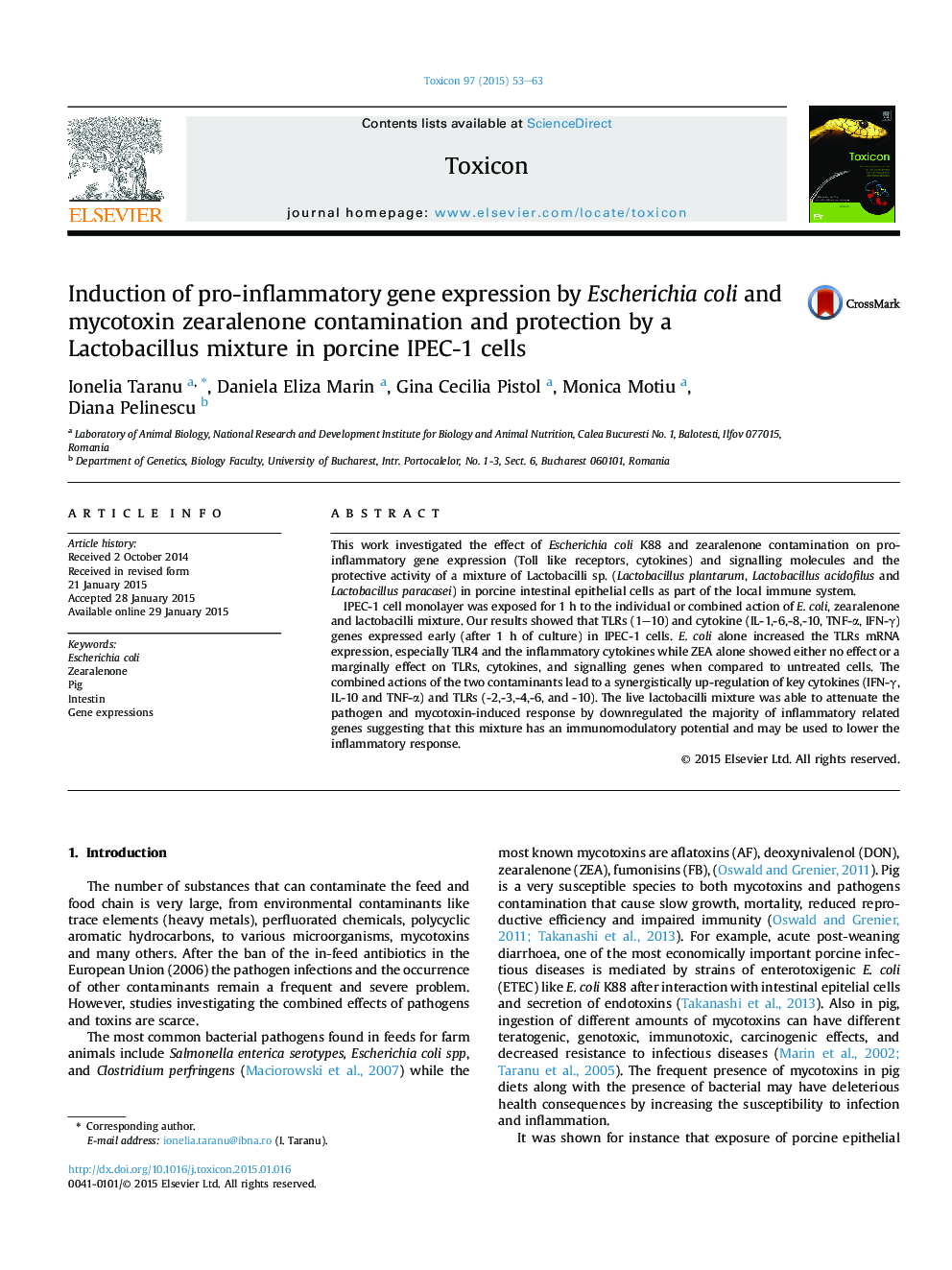| Article ID | Journal | Published Year | Pages | File Type |
|---|---|---|---|---|
| 2064596 | Toxicon | 2015 | 11 Pages |
•Escherichia coli alone strongly increased cytokines and TLRs mRNA in intestinal epithelial cells.•ZEA alone showed marginally effect (increase/decrease) on cytokines and TLRs expression.•Combination of the two contaminants increased inflammatory mRNA markers in intestinal cells.•Lactobacilli mix down-regulated inflammatory mRNA markers increased by E. coli and ZEA.
This work investigated the effect of Escherichia coli K88 and zearalenone contamination on pro-inflammatory gene expression (Toll like receptors, cytokines) and signalling molecules and the protective activity of a mixture of Lactobacilli sp. (Lactobacillus plantarum, Lactobacillus acidofilus and Lactobacillus paracasei) in porcine intestinal epithelial cells as part of the local immune system.IPEC-1 cell monolayer was exposed for 1 h to the individual or combined action of E. coli, zearalenone and lactobacilli mixture. Our results showed that TLRs (1–10) and cytokine (IL-1,-6,-8,-10, TNF-α, IFN-γ) genes expressed early (after 1 h of culture) in IPEC-1 cells. E. coli alone increased the TLRs mRNA expression, especially TLR4 and the inflammatory cytokines while ZEA alone showed either no effect or a marginally effect on TLRs, cytokines, and signalling genes when compared to untreated cells. The combined actions of the two contaminants lead to a synergistically up-regulation of key cytokines (IFN-γ, IL-10 and TNF-α) and TLRs (-2,-3,-4,-6, and -10). The live lactobacilli mixture was able to attenuate the pathogen and mycotoxin-induced response by downregulated the majority of inflammatory related genes suggesting that this mixture has an immunomodulatory potential and may be used to lower the inflammatory response.
